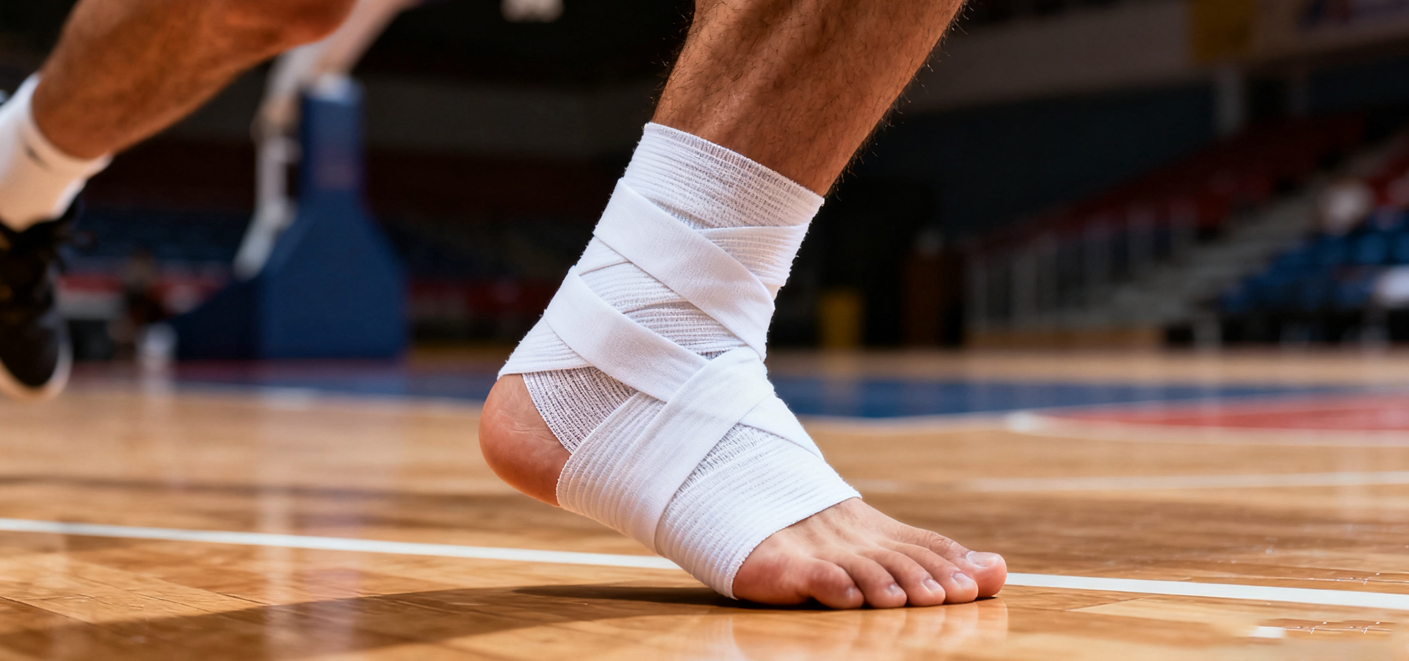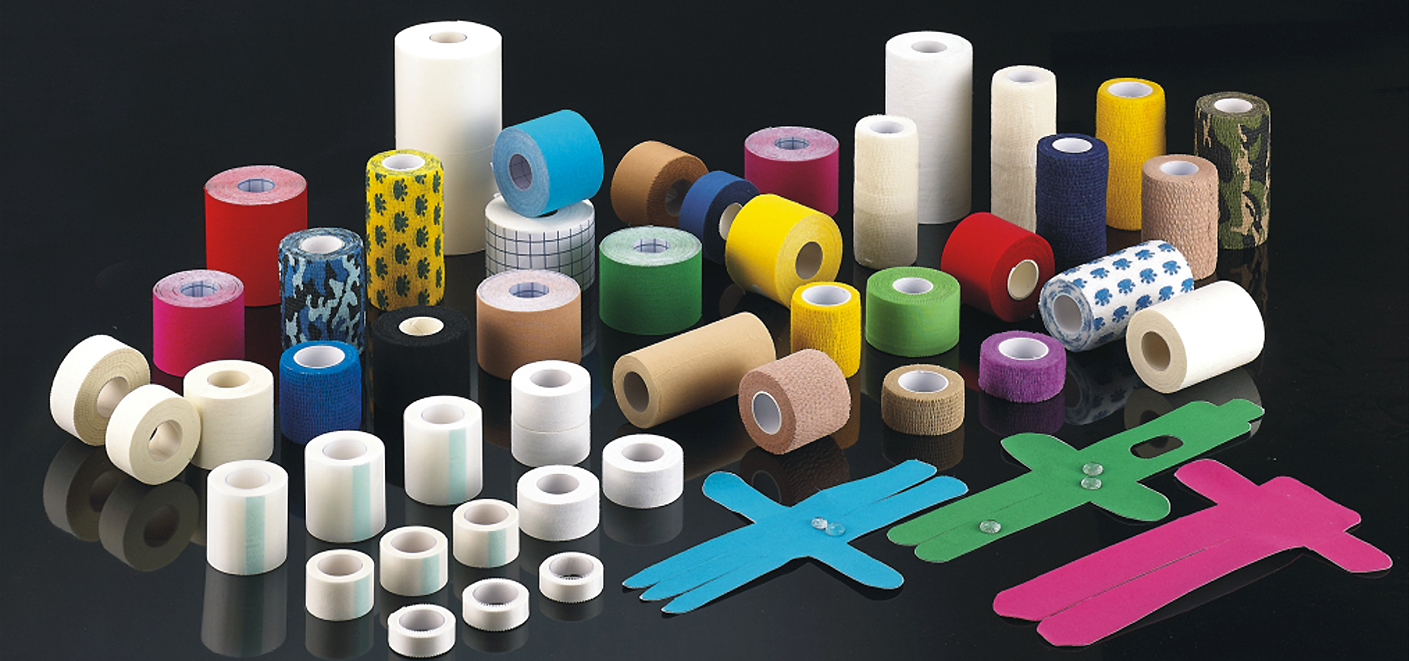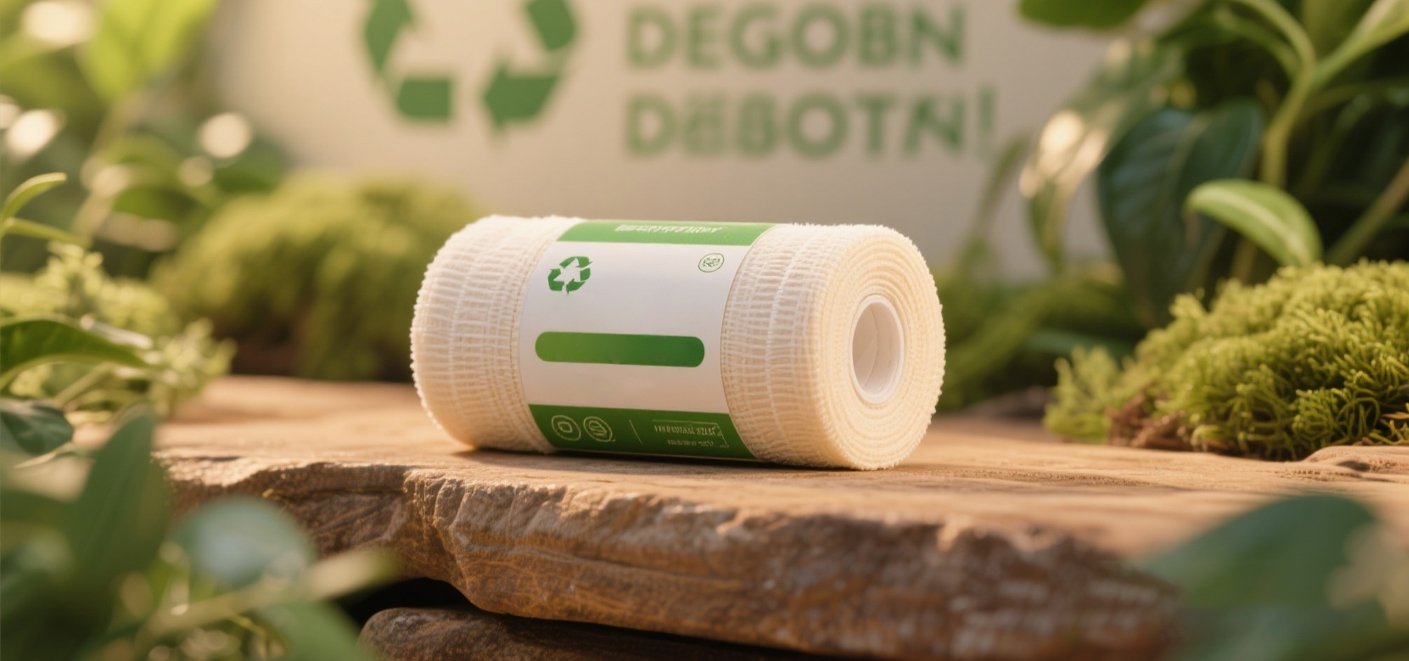The company focuses on the medical field and provides customers with professional care solutions in the fields of sports, medical care, personal daily use, animal health, tattoos, beauty, etc.
-
 Sports Medical Bandages
Sports Medical BandagesSports medical bandages: various professional wrapping methods for athlete joint protection
Ankle Joint - "Figure 8 Wrap" (Suitable for: Running, basketball, and other sprain-prone situations)
Steps: Start 10cm below the ankle and wrap the wrap in a circular motion twice to secure. Then, wrap it diagonally upward around the instep to the outside of the ankle, then down around the heel and back to the ankle, forming a figure 8. Repeat 3-4 times, then secure it in a circular motion above the ankle.
Core Benefits: Fully wraps the ankle joint, enhancing ankle stability and effectively preventing inversion and eversion sprains while maintaining the normal range of motion of the foot.
-
 Bandage Type Selection
Bandage Type SelectionTransparent film bandages (such as 3M transparent dressings):
Advantages: Waterproof and breathable, allowing for direct observation of wound healing; moderate adhesion, suitable for active areas like joints and fingers; reduces the need for frequent changes (typically lasts 3-5 days).Non-woven elastic bandages (such as medical elastic tape):
Advantages: Lightweight, breathable, slightly elastic, suitable for flat areas (such as arms and legs); mildly irritating, suitable for sensitive skin.Breathable Bandages:
Advantages: Portable, ready to use, suitable for spot wounds <1cm in diameter (such as minor cuts on fingertips). Choose bandages with an absorbent layer (such as a cotton pad) to avoid airtight plastic bandages. -
 Environmental Impact Assessment Of Biodegradable Bandages
Environmental Impact Assessment Of Biodegradable BandagesBiodegradable bandages, made from natural biomaterials (cotton, chitin, etc.) or biodegradable synthetic materials (PLA, etc.), offer advantages over traditional petroleum-based bandages in terms of resource sustainability and overall carbon emissions. Some production processes can also reduce pollution and energy consumption. Biodegradable bandages can completely degrade in 6-12 months, eliminating the risk of long-term white pollution and microplastics, and closing the carbon cycle. Future efforts are needed to further unlock their environmental potential through greener raw materials, lower-carbon processes, and standardized waste sorting.

 English
English 中文简体
中文简体 Español
Español عربى
عربى Français
Français Português
Português
